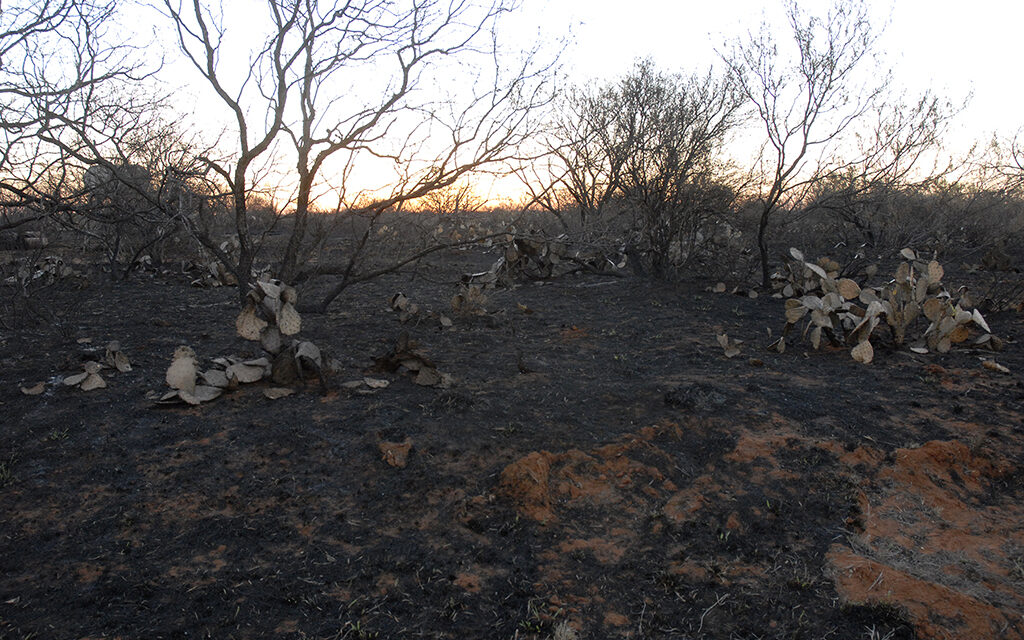by John Jefferson
I’ve had personal experience with wildfire. It was enough to make me sensitive to all other wildfires. The recent one in the Panhandle still has me reeling. As of March 8, it was still raging and only 44% contained.
The one I went through wasn’t even a mere spark compared to what the Panhandle fire that started last week has done –and is still doing as you read this.
I received an urgent phone call at work. The caller said, “Mr. Jefferson, your place is on fire.”
I politely replied that what he saw was a prescribed burn of three brush piles an expert burner was doing for the landowner.
He paused, then said, “I’m looking out my window and the fire just came over the bluff above the creek. There’s nothing between the fire and your house except that hay field!”
I left quickly. Speeding out of the parking lot, I saw a huge plume of smoke seventeen miles away … toward home.
That started the longest, most stressful day of my life. It didn’t end when the sun went down. High wind and low humidity had exploded the brush burn into a rampage. So much for the “expert burner!”
Fortunately, the only property damage was burned out fence lines and a gap torn by volunteer fire departments’ trucks accessing ponds to refill their tanks on adjoining ranches. Half of our ranch was blackened.
We battled hot spots well into the night. Neighboring subdivisions with many new homes were thankfully spared.
Compared to the recent Panhandle fire, ours wasn’t even a flicker of flame. Two people have already died in the Panhandle. Five hundred structures have been destroyed. Over a million acres are blackened. Thousands of cattle and some horses are dead. One beloved pet donkey is missing. Livestock death totals are still climbing. These figures came from the Austin American Statesman.
The fire became the largest in Texas history – second largest EVER in America! Panhandle farmers and ranchers are devastated. They live with threats of disasters and droughts, but over 85 % of Texas’ cattle lived there. One saddening account told of dead cattle up against a fence line, unable to escape any further. And much of the pasture grass upon which cattle feed was destroyed. Barns burned to the ground, as did the hay inside them, leaving cattle nothing to eat.
In addition to destroyed homes, barns, vehicles, and equipment, many are said to have escaped with merely the clothes they were wearing. Cattle killed by fire meant loss of income. And this was right at calving season.
Scammers often prey upon disaster victims. But Texans are helping in countless ways. Some are even trucking in hay for cattle. One reliable organization for contributions is Austin Disaster Relief Network. It’s a church-based non-profit with a respected reputation. They’re sending volunteers to assist and accepting donations of clothing, furniture, and money. Donations – large and small – may be sent to ADRN through https://adrn.org/txpanhandle/ .
They need our help!
JJ





